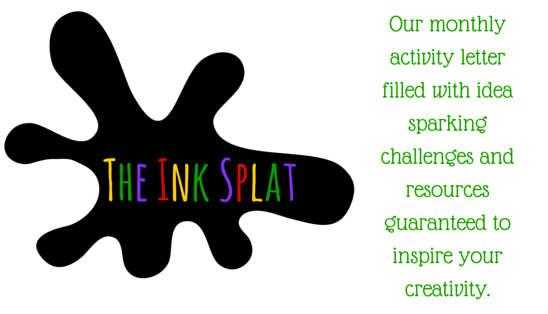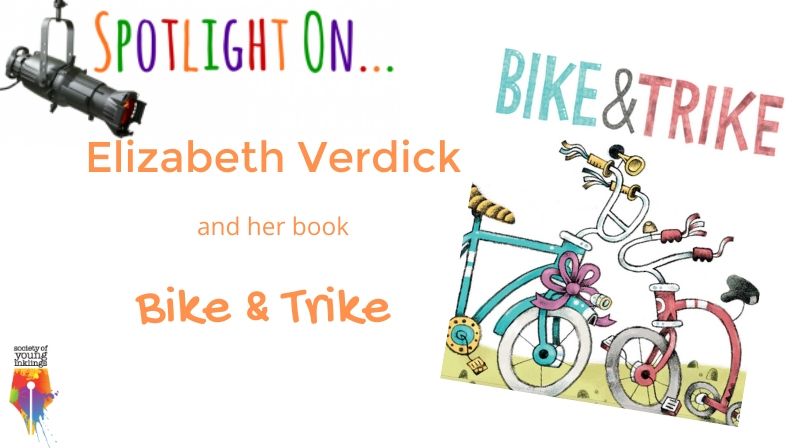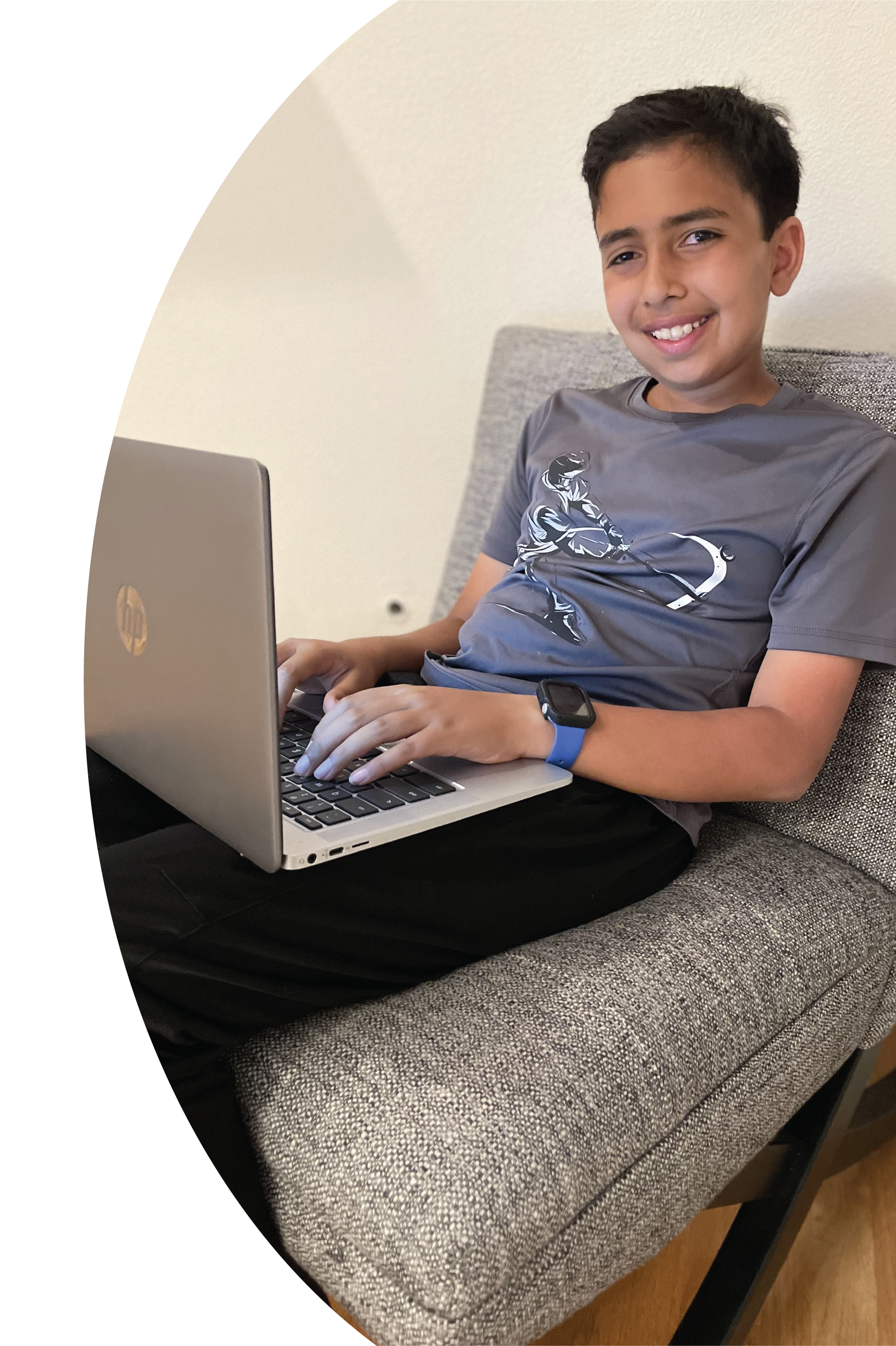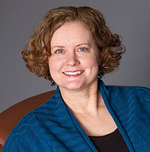This month, we talk to author Elizabeth Verdick about writing for picturebooks. Her latest, Bike & Trike is available now! In this interview, we learn about writing strategies, and tips on writing a picture book.

Writing Challenge
This month, Elizabeth has challenged us to try our hands at picture book drawing:
| I Love…. | What I’m Curious About… | What Scares Me… |
| 1. | 1. | 1. |
| 2. | 2. | 2. |
| 3. | 3. | 3. |
Now, use two or more of your answers to create a three line mini story.
For example, “I love rocks” and “I am scared of heights”
Steve the Rock wanted to go to the national rock and roll rock competition. He was afraid to go on a plane to get there. He wore his rocker outfit to the airport and it gave him the confidence to take the plane ride.
Draw out pictures of the beginning, middle and end of the story to make a “mini picturebook”.

An Interview with Elizabeth Verdick
Tell us a little bit about the books you’ve written.
Peep Leap was my first storybook. It’s about a little wood duck who is afraid to jump from the tree where his nest is to the pond below, where his mama is. Before Peep Leap, I’d written a series of behavior books often used in classrooms for young children. They’re teaching tools with titles like Voices Are Not for Yelling or Teeth Are Not for Biting. I liked writing those books, but it was special to have Peep Leap, my first storybook, published. After that, I published Small Walt about a little snowplow, and a follow-up called Small Walt and Mo the Tow. I’m happy to say there’s a third Small Walt book coming out later in 2020: Small Walt Spots Dot. My most recently published picture book is Bike & Trike, which is about a new bike and an old trike who become friends, but not before some conflict happens (stories are about “trouble,” after all).
What strategies do you use when you’re drafting at the start of a writing project?
One of my strategies is letting myself be messy and letting myself make a lot of mistakes on the page. That can be a challenge if you have some perfectionistic tendencies or if you like it when your work is neat and contained. But creativity isn’t a neat and contained thing, so sometimes we just have to let all of that go so that we can get messy with our words and our pictures. I’m not an artist and I don’t illustrate my own picture books, but sketching is something that I like to do as part of picture-book writing. Sometimes the page ends up looking like my brain is going every which way, but giving myself the freedom to let that happen on the page allows my brain to generate more ideas. You never know where those ideas are going to end up someday. For example, I never thought that I would write a book about a snowplow. I’m not a snowplow driver and I’ve never driven a big truck, but I live in Minnesota. It gets very cold here, and I wanted to write something related to my experience of winter. I love the way that snowplows take care of us during snowstorms. These trucks and their drivers make it possible for us to still go out and live our daily lives.
Do you ever get writer’s block? What do you do about it?
Yes! I get blocked frequently, actually. And then I get really, really crabby, because I know I’m capable of being creative and putting a story together, but sometimes other things just get in the way, whether it’s other deadlines or important chores or family commitments… and sometimes when lots of those things are going on, it’s hard to become unblocked and find time for creativity. When I get blocked, sometimes I reach out to another writer friend like Naomi from Young Inklings. Naomi has given me a lot of cool tips for becoming unblocked. Another thing that I do is go outside and take a walk with my kids or our dog. Being outside in nature frees me up a little bit. I also enjoy consuming other people’s work. Sometimes just watching a movie can feel really inspiring! Movies can be immersive and make me feel motivated to go do something creative of my own. I also like reading other writers’ work to see what they’re doing—not to compare where they are to where I am—but to experience their work and feel those emotions that their work elicits in me. As those emotions get freed up and come to the surface, it makes me feel like writing too.
How do you brainstorm?
The brainstorming tool I use most often is this: I take a page and draw three columns. The first column is WHAT I LOVE, because what you love inspires you. The second column is WHAT I’M CURIOUS ABOUT, because you never know what interest or question might inspire new writing ideas. For example, one thing I’m really curious about is bats. I’m also curious about otters. I’m not necessarily going to go try to write a nonfiction manuscript about bats or otters, but reminding myself that the world is full of curiosities and full of possibilities opens my mind up a little bit. The third column is WHAT SCARES ME. I think that can be an interesting source of information to work with. Furthermore, fear is a theme that comes up a lot in stories for children; my story Peep Leap, as I said, is about a duck who’s afraid to jump from the nest to the pond below—we all have to make leaps in life, don’t we? As a children’s book writer, it’s helpful for me to keep certain themes front of mind. When I use a list like this and capture topic areas, I keep it nearby so that when I need to generate ideas, I have a source to go to that came from me.
What are your favorite and least favorite parts of the writing process?
I think my least favorite part of the writing process is coping with my own self-doubts. I may think: I don’t know how I did this the last time. How am I ever going to do it again? or What if it’s not good enough? What if my editor doesn’t like it? What if the audience doesn’t like it? You often work alone when you’re a writer and you end up being in your head a lot, so it’s easy to let those negative thoughts slow you down. My favorite part of the writing process is the wordsmithing. I love it when I’ve gotten to the point where I know the story—the characters, the title, the setting, the plot—then, all that’s really left is playing with the words, which is so satisfying to me. At that stage, I feel calmer and more confident. Even as a kid, I loved the way words made me feel. That part of my job makes me really happy.
How do you think about word choice? What ways do you like experimenting with words?
One of the things I’ve learned is to try to avoid filling your writing up with too many general adjectives. Instead of describing things as beautiful or lovely or wondrous (even though those are really fun words), try to give readers something more specific. Give them sensory descriptions, such as a scent or touch/texture, or what I especially love sound words. Another thing I try to do is let my characters have a language of their own. For example, in Small Walt, a little snowplow is facing a big snowstorm and feeling overwhelmed. I wanted to see if I could get a bit of rhyme in my book without the entire text needing to rhyme. So, I experimented with giving Walt little chants that he says to himself as he’s driving in order to show his determination. Here’s one: My name is Walt, I plow and I salt. I clear the snow so the cars can go. So that became a little bit of his language in the book, as well as engine noises because he’s a truck.
If a writer wanted to try a picture book, where might they start?
First off, I know most of your writers are older than most picture-book readers and they may not be reading and writing picture books as often anymore, but I would encourage them that moving outside of your usual genre can be a fun way to get your creative juices bubbling. You may find that stopping and doing work on a different genre, like a picture book, can suddenly reinvigorate the other types of writing you’re doing. If you want to write a picture book, I’d say start by reading some picture books again. Revisit some favorites from your past as a starting point. Read them and ask yourself: What did I love about that book? Why did I make my mom or dad or grandma read it over and over again? What is it about that character that I can still relate to? Then, take a look at some newer picture books you haven’t read to see what similarities and differences you can find between new books and your old favorites. It’s fun to sort of immerse yourself in the picture-book world a bit before you take on the challenge of writing one yourself.
The nice thing about picture books is that they’re short, and sometimes all you want to write is something short. In fact, a lot of picture books are less than 500 words and editors will tell you, the shorter the better. What that means, though, is that you have to choose every word very, very carefully. Early on in writing picture books, you’re already thinking about the layout of the book, too. You might even fold a few pieces of paper in half and imagine flipping through the book as a child would. In picture books, you can’t ignore the power of the page turn. In longer works, you may think about how chapters end, but in picture books, you’re thinking about the page turn. You want your readers to have a compelling reason to turn that page. When you turn the page, a whole new thing can happen, a whole new set of actions. It’s almost like time passes automatically because you have simply turned the page. Lastly, remember that in picture-book writing, the pictures do a lot of the work for you. You don’t want to describe exactly what’s happening, because in a picture book, the pictures do half of the storytelling! You want to give the illustrator room to do what they do best.
What final advice would you share with our youth writers?
Whatever you’re writing—novels, picture books, poetry—it has to feel real and true in some way, and it has to touch someone emotionally. More than anything, your words have to connect with the hearts of your readers. That’s part of what I love about writing: the challenge of connecting with your readers. That part doesn’t necessarily get easier as you gain experience, but it’s a worthy challenge to keep facing.

INKLINGS CELEBRATE
Join us for Summer Camp!
We’re inviting passionate young writers to join us on Zoom for writerly summer camp experiences. Each camp will include skill-building activities, time for drafting, and collaboration with peers.
A special thanks to Elizbeth Verdick for sharing with us! Sonja’s latest picturebook, Bike & Trike, is available everywhere books are sold! Order Here. You can view her full book catalog here.
 Elizabeth Verdick writes a mix of nonfiction and fiction for children. She’s a graduate of Carleton College (BA) and Hamline University’s MFA program in Writing for Children and Young Adults and has taught writing classes and done manuscript critiques to help other writers with their craft. She lives in Minnesota, a state with a vibrant kid-lit community. One of her publishers is based there: Free Spirit Publishing. Before Elizabeth was a writer, she was an editor of children’s books. Every book she works on is an attempt to express what’s in her heart: a love for children, animals, and the natural world.
Elizabeth Verdick writes a mix of nonfiction and fiction for children. She’s a graduate of Carleton College (BA) and Hamline University’s MFA program in Writing for Children and Young Adults and has taught writing classes and done manuscript critiques to help other writers with their craft. She lives in Minnesota, a state with a vibrant kid-lit community. One of her publishers is based there: Free Spirit Publishing. Before Elizabeth was a writer, she was an editor of children’s books. Every book she works on is an attempt to express what’s in her heart: a love for children, animals, and the natural world.

